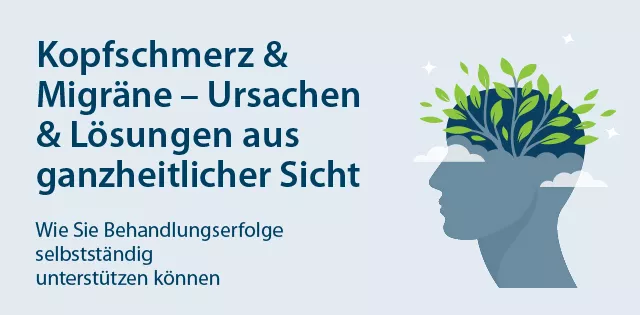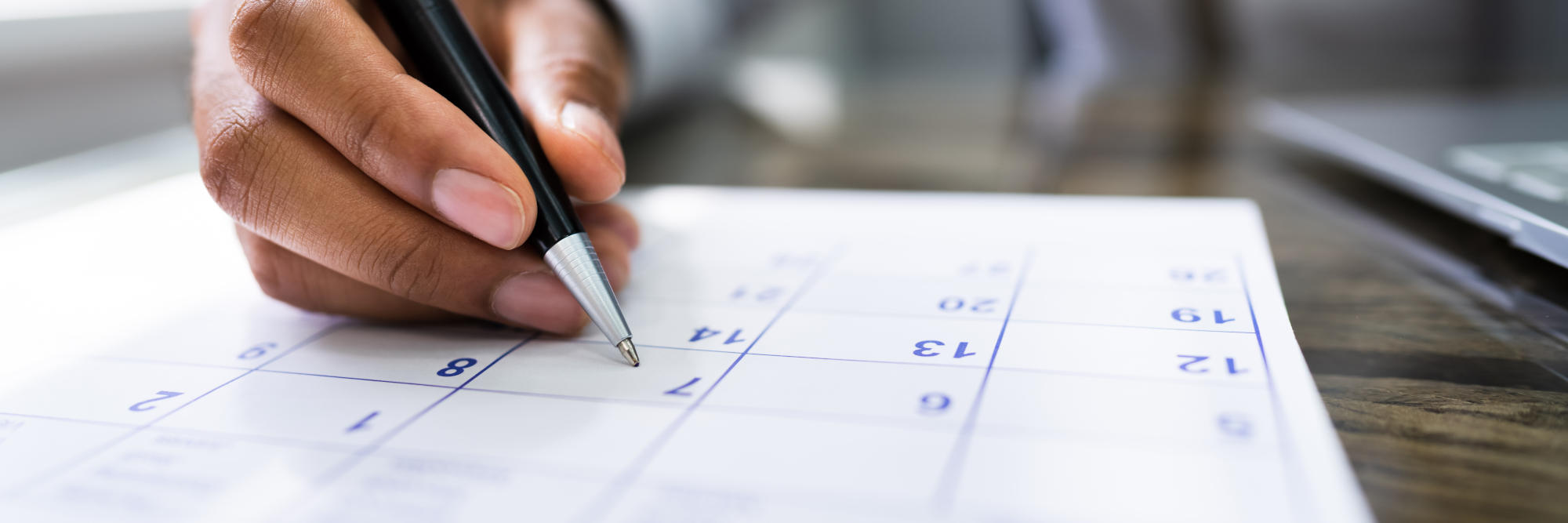18/04/2024
Migraines - what is behind them and how can they be alleviated?
Headaches and migraines can have a significant impact on daily life - whether at work, during leisure time or when socialising with family and friends. But do we have to put up with it?
It is estimated that two out of three people in this country suffer from temporary or persistent headaches. The most common forms are tension headaches and migraines. Conventional medicine often offers only limited treatment options. But there are other ways - holistic approaches that look at the person as a whole and not just treat the symptoms.
In this interview, Dr. Lisa Junike, specialist in physical and rehabilitative medicine, qualified osteopath and pain specialist, explains what is behind this from a holistic perspective and how therapists and patients can effectively alleviate headaches and migraines.
Interview with medical specialist and pain specialist
Dr Lisa Junike
Dr Junike, how did you personally come to deal with headaches and migraines?
This topic is the second most common problem that I deal with in my consultations after lower back pain. With my holistic approach, many of my patients have found a way out of their headaches or migraines. Cure is not always possible for certain reasons, but a reduction in intensity and frequency is almost always possible.
Conventional therapy relies heavily on painkillers. What do you do differently?
I have observed that one of the main triggers is increased tension, which is why I postulate that almost every migraine attack is preceded by a tension headache. And this tension headache is definitely treatable. In the best case scenario, a migraine attack will not occur at all. Painkillers may well be part of the treatment - but not only.
For me, a crucial part of headache therapy is patient education. Ultimately, it is many small tips that lead to success and help patients learn to recognise and reduce tension at an early stage.
Where do you see the most important similarities and differences in the treatment of headaches and migraines?
In terms of symptoms, there are clear differences between "normal" headaches and migraines. A half-sided, throbbing headache, nausea with vomiting, a high sensitivity to light and sound - these are all typical characteristics of a migraine, which occur much less frequently or to a lesser extent with other headaches.
I take a completely different approach to treatment: for me, there is usually no difference between the treatment of "normal" headaches and migraines. In both cases, I look at the same factors that are often involved in the development of pain: Skull, spine, bite, muscles, fascia, nutrition, fluid balance, etc. What exactly needs to be done then depends on the individual findings. This applies to "normal" headaches as well as migraines.
What role do you think fascia plays in headaches?
A very important role - the main pain in tension headaches is fascial pain - "it pulls from the neck over the skull to the front". Stretching out the fascia can often lead to immediate relief from headaches. Rolling out the sole of the foot, whose fascia extends to the eyebrows, can also immediately relieve headaches. The exciting thing is that you don't always need a doctor or therapist to do this. With the right instructions, patients can do a lot themselves to care for their own fascia.
You also pay attention to the eyes. Why?
The neck muscles are linked to the eye muscles. If, for example, the eye muscles are strained - e.g. when using varifocals - the neck muscles automatically tense up. People with unrecognised defective vision also overstrain their eye muscles in order to obtain a sharp image. This in turn is transferred to the neck muscles and very often leads to headaches.
How important is diet
In my opinion, nutrition plays an important role in many diseases, especially chronic ones. For my patients who regularly suffer from headaches or migraines, I recommend above all to be sparing with sugar and flour (white flour, wheat flour type 405). This light-coloured flour only provides a fraction of the minerals originally contained in the grain. At the same time, it contains too much starch, which is converted into sugar in the body. Sugar in turn promotes hyperacidity in the tissue, which ultimately leads to very firm connective tissue - which brings us back to the headaches.
Which micronutrients are particularly important for headache patients?
The classics are, of course, magnesium for muscle function and B vitamins for the nerves.* I usually recommend that my patients also take supplements with alpha-lipoic acid and coenzyme Q10. It is crucial that the dietary supplements are of high quality. Above all, this means: high-quality raw materials and no flavourings, sweeteners, lactose or plasticisers in the capsule, as they reduce the effect of the "good substances".
Do you have any other tips for migraine and headache sufferers?
Yes, of course. There is a lot that patients can do themselves - for prevention and in acute cases.
- A simple but valuable tip is to drink plenty of clear water water! It is best to drink a litre of water as soon as you notice the first signs of a headache. Preferably from glass bottles or - if the water quality is good drinking water quality - from the tap, please do not use thin-walled plastic bottles or filters containing plastic.
- I like to recommend walking with long strides in the fresh air to my headache patients. Preferably in nature and without Nordic walking poles.
- A simple but effective remedy is daily stretching and tensing exercises. Just 10 to 15 minutes a day is enough.
- I also show my patients how they can regularly stretch their fascia with their fingers. A simple ritual that most people find extremely beneficial.
- Whether it's your diet, clothing or living environment: it's worth avoiding environmental pollution as much as possible. This is especially true for people who are prone to headaches and migraines.
- No one has to deal with their headaches alone. Seek holistic support.
Thank you very much, Dr Junike. We wish you and your patients all the best!
*Magnesium contributes to normal muscle function. Biotin, vitamins B2, B3 and B6 contribute to the normal function of the nervous system. Vitamin B5 contributes to normal synthesis and metabolism of some neurotransmitters.

Online-Seminar
Kopfschmerz & Migräne aus ganzheitlicher Sicht
Für alle, die mehr über die Ursachen von Migräne und Kopfschmerzen erfahren und ihnen aktiv begegnen möchten
Dr. med. Lisa Junike, Fachärztin für Physikalische und Rehabilitative Medizin, diplomierte Osteopathin und Schmerzspezialistin, erläutert ganz anschaulich, woher (Kopf-) Schmerzen kommen, und gibt praktische Tipps, was wir selbst dagegen tun können.
Termin: 04.11.2024































